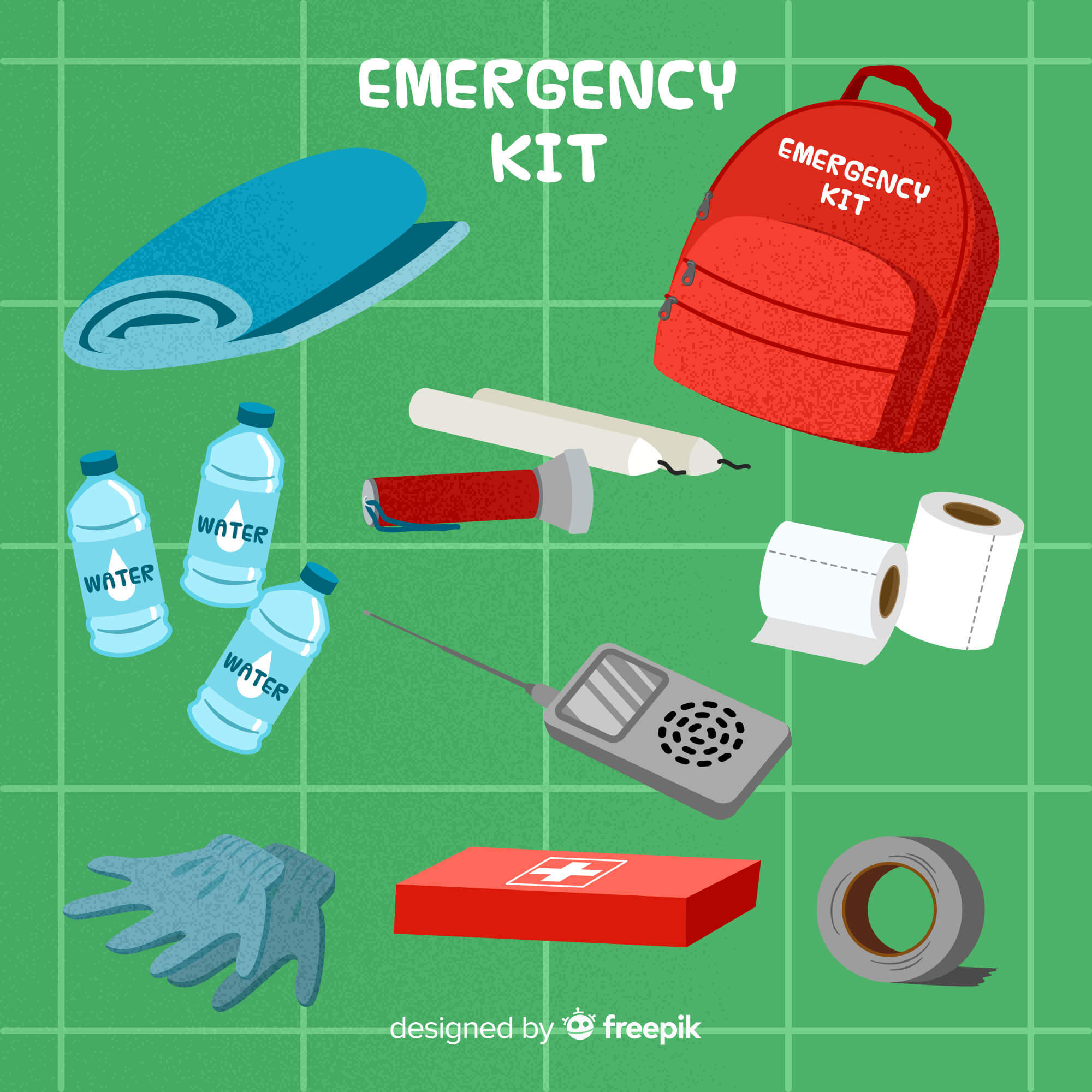[Editor’s note: This guest post from reader Keith Bell looks at a number of ways you can avoid the harm that frequently comes to businesses who run into internet or other IT outages.]
6 Tips to cruise through

In any infrastructure, there were, are and always will be some level of disruption. Internet outage is no exception to that too. Just like a water system experiences periodic issues and electricity companies experience periodic outages, IT companies too experience internet outages. The thing is that in today’s world where a majority of things have become internet dependant, internet connectivity issues have become as important as water and power issues when it comes to infrastructure dependency. Internet outages can cause huge loss of productivity in an IT business and unfortunately, these outages happen more frequently compared to other major services. Various estimates of surveys and studies done by IT industry analyst companies revealed that businesses face a whooping financial loss between $84,000 and $108,000 on an average for a single hour of downtime of their IT systems. For any IT business owner, there has to be three fundamental questions in mind – how to protect the business? How to minimize the impact? How to be prepared for an internet outage? Now, to deal with internet outages, you’ve to have a proper contingency plan in place. And a proper contingency plan must consist of some key points. Let’s have a look at such 6 crucial points that would help you sail through internet outages.
- Notify the stakeholders
The first thing to do when an internet outage happens is to inform the stakeholders. They should be provided with relevant, rich and timely data so that they can provide feedback and react accordingly. Conversely, it’s also equally important to notify the staff and customers at the same time. As companies are becoming heavily reliant on internet and other related systems, security, profitability and productivity are at much greater risks than ever. Also, ensure that the IT team knows complete details of the outage. Be it a planned or unplanned outage, your IT professionals must be able to efficiently communicate about it to all related persons affected by the outage. However, prevention is always better than cure. So, it’s imperative to continually monitor, develop and review your IT infrastructure with the latest technology available.
Discussing with your ISP service provider over the issues that your organization might have in times of outage is a must. Though such problems cannot be avoided 100% of the times, a good service provider will do all in his reign to not let his clients down. Such issues can be reported through publicly available portals that may contact and provide the necessary details to the service providers.
- Have different carriers for the internet connections

One of the best ways to safeguard your business is to have more than one internet service providers whose services route through different links. It’s much like having a UPS (Uninterrupted Power Supply) when it comes to power outages. The only difference is that you can utilize the second provider link to support your network bandwidth rather than keeping it on standby or idle. The second one doesn’t need to be of the same capacity or cost or have the same assurance agreement as your primary internet provider because you can always prioritize one of the internet connections over others. There’re a significant number of affordable carriers available in the market to make this possible.
- Secure the Email first

Email is the primary tool that allows you to stay connected with employees, customers and suppliers during an internet outage. You can add an extra layer of protection for cases like outages occurring from provider’s end like Google Mail or Office 365. An email security solution based on cloud allows you to work seamlessly even if your primary mail system is down. For most businesses, simple relocation of the user with connectivity issue is adequate enough to ensure continuous workflow. Today, when wifi hotspots are widely available, your staff can remotely reconnect, access business systems and email during an outage and then return to the primary one when the outage has been fixed. By adding redundancy and mail archiving, you can be prepared for internet outage. These ensure you’re not out of business when your systems are down. During an internet outage, if you’ve to use internet anyway, tethering your phone is perhaps the last resort. Though you can use tethering straight from your carrier but that’s expensive, especially if you don’t use it often. Conversely, tethering may have some problems like data limitation and sometimes tethering fees are exorbitantly high as well. Alternatively, you can use cheap pay-as-you-go mobile hotspots for exigencies. In case of internet outages, you just need to turn it on, connect to the wifi and continue with your work.
- Having cloud files available offline can be a smart move
We store important documents in the cloud to access them anytime from anywhere with an internet connection. But in the case of internet outage, how can you access them? Service like Skydrive (though things have slightly changed for Windows 8.1) and Dropbox allow you to use those files offline. These services sync documents straight to the computer and if you’ve proper clients installed, you can seamlessly use them offline and they’ll sync when you’re reconnected. When using these services, you need to keep one complication in mind – conflicting files. When you edit a shared file offline, the same may be edited by someone else at the same time. In that case, you’ll see conflicted version of the file when you’re connected the next time. You can also use Google Drive where you can easily upload the file and access them offline as if you’re working with the desktop app. Things get tricky when you use the online office suite of Google Drive. You’ll only be able to edit presentations and documents, while spreadsheets just remain viewable. However, it’s always better than nothing. So, if you want to use Google Drive, make sure you properly set this up.
- Need research? Download the site!

Research has become a crucial part of most of present day jobs. Though it entirely happens online in almost all cases, with services like Evernote, you can have the information on your computer offline. The web clipper of Evernote is the finest content saving tool that allows you to access everything relevant to the research offline. While installing Evernote, don’t forget to install its desktop version. It’s not only a note-saving application but it allows collaboration and file-sharing with others too – thanks to the free storage provided by it. Before you can install the Evernote Clipper, you’ve to register with Evernote and create an account. If you want to read RSS feeds offline, obtain a desktop client that allows offline reading. If you’re using Windows 8, go for NextGen Reader, which sync with Feedly Cloud. If you’re a Mac user, you can look for Readkit that allows feeds to be downloaded to your computer, enabling you to read them offline. Also, ensure download of all your required documents that you need to use regularly.
- Use of mobile broadband
Mobile broadband is a term widely used to describe mobile internet access services that utilize mobile phone infrastructure and cellular network. The strength of the mobile broadband depends on the network signal. You can access mobile broadband from a significant number of devices including mobile phones, MiFi units, mobile dongles and data cards. Dongles are plug-and-play devices and USB-compatible. These are actually portable modems and widely referred as USB modems or mobile USB sticks. Today, two types of mobile broadband are available namely 3G and 4G. The main difference between these two is the speed. If you need to have a much faster connectivity, you should go for 4G instead of 3G. The goal of mobile broadband is to provide the customers with low cost and high speed connectivity. By using this technology, you can have wireless access across remote areas. Mobile broadband provides multitude of benefits. Let’s have a look at some of them.
- It comes at a cheaper pricing. Though 4G is more expensive than 3G, it’s still less expensive than home broadband.
- You don’t need to be connected to an Ethernet connection or be in the range of a mobile hotspot because mobile broadband acts like a portable modem. You can plug the device directly into one of your USB ports and start working which makes it quite hassle-free.
- Simply put, you can use it anywhere. You just need to have the required signal strength.
- Nowadays, 4G provides much faster connectivity than most of the average home broadband providers which makes mobile broadband a more viable option compared to fixed-line internet connections.
- Mobile modems are discreet and small which means you can carry them even in your pocket and connect to the internet whenever you want to.
If you want to use mobile broadband rarely, a standard 3G pack should be perfect for you. In case your work involves heavy downloads, you should look for economical or special packages to avoid incurring additional costs.
Final Thoughts
Internet outages are always unpredictable but with these 6 tips, you can minimize the business impact. If you become prepared for this inevitable occurrence beforehand, you can save a lot of unproductive time when the catastrophe strikes.

















